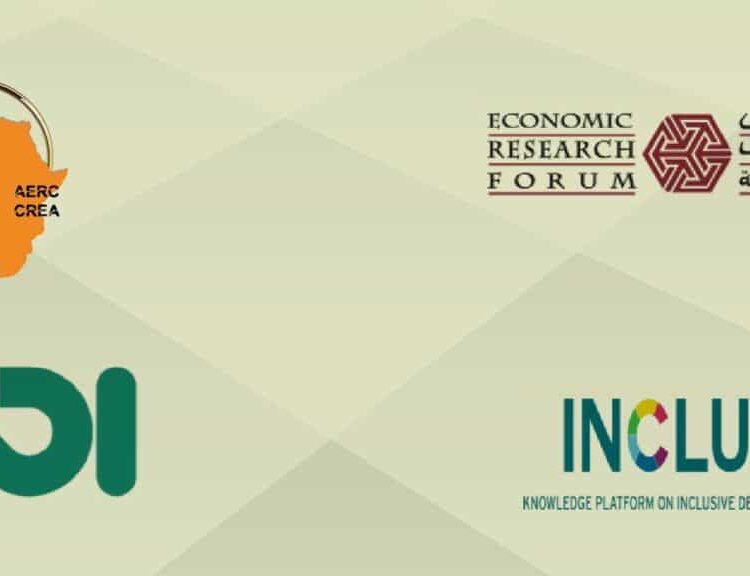
In the online consultation on inclusive development launched by the Dutch Ministry of Foreign Affairs, roughly three different perspectives are expressed on how social protection contributes to inclusive development. It is seen either as a means to build the resilience of the extreme poor, as a catalyst for increasing economic growth, or as a basic human right. Which of these perspectives is preferable is, above all, a matter of political choice.
In the development debate, social protection programmes are decreasingly seen as a cost and more and more as an economic investment capable of reducing poverty and promoting social mobility (see The Broker’s Social Protection dossier for an overview of this debate). This is reflected in the fact that some half of the 106 contributions to the ministry’s consultation, held in March 2015, discussed the importance of social protection (read the synthesis report here). The contributors disagreed, however, on the type and focus of such programmes, and on the best way to implement and finance them.
Types of social protection programmes
Social protection is a broad concept that covers a wide range of private and public initiatives to provide income to the poor, protect the vulnerable against risks, and invest in the capabilities and rights of those who are vulnerable and marginalized, to improve their socioeconomic chances and reduce their vulnerability. Social protection programmes can be divided into four types:
- Conditional cash (or in kind) transfers from the state to the poorest and most excluded groups, to increase their human capital. Beneficiaries must meet certain conditions to receive these transfers.
- Unconditional social assistance is provided to people meeting certain eligibility criteria, but without them having to fulfil any further conditions. These include unemployment benefits, social pensions, disability benefits or child and family benefits.
- Contributory social insurance programs require beneficiaries or employers to contribute financially. These programmes include insurance in case of illness, injury, pregnancy, dismissal, or other forms of disability to work. Supplementary pensions or health insurance may also fall into this category.
- Labour market interventions aim to improve living and working conditions. These include minimum wage legislation minimum work standards and skills training, as well as policies that promote small and medium-sized enterprises and employment-related programmes aiming to reduce exclusion.
These disagreements were largely based on three different perspectives. Authors advocating a focus on the poorest argued that governments should protect the most vulnerable, but should try not to disrupt markets. Furthermore, they claimed that providing benefits to the poorest can have a stimulating effect on the economy by increasing demand and human capital. A second group saw this positive influence on the economy as a way to leverage the impact of limited government spending. Social protection would in this way be a catalyst for inclusive growth, focusing on decreasing the risks for those who can contribute to growth. A third group emphasized the need to see social protection as a right, noting the importance of solidarity and the benefits of political support for broad programmes.
Market-based versus rights-based perspectives
Programmes addressing specific groups in society – like the extreme poor or those with potential (the front-runners) – usually derive from a market-based approach. They reason that universal protection schemes risk disrupting the market, as they provide few incentives for people to excel. Edith Boekraad for instance stated that social transfers should be “well-targeted” and should take precedence over subsidies that risk distorting the market. Instead, these contributors proposed that social protection schemes should be targeted at those from whom the most economic benefits can be expected. David Seidenfeld & Sudhanshu Handa for example discussed the positive spill-over effects of conditional cash transfer programmes for the wider community.
Others argued that universal social protection programmes, on the other hand, derive from the intrinsic value of social protection. Arjan de Haan claimed that social protection, basic education and health services all are fundamental rights. According to this perspective, protection against vulnerability and falling incomes is a human right, and should be accessible to everyone. Instead of targeted programmes, countries should therefore develop nationwide social protection strategies based on solidarity. Nicky Pouw & Joyeeta Gupta, for example, emphasized the need to go beyond policies that only provide temporary relief from “the failures of a neoliberal system”.
Perspective 1: Protecting the poorest and most marginalized
Social protection targeted at the extremely poor is increasingly seen as worthwhile, both for companies (as it increases the market for their products) and for the economy in general. Franziska Gassmann and Erik Solheim offered many examples of how social protection programmes have reduced poverty and inequality. As Gassmann explained, predictable social transfers that provide guaranteed support from the state to the poorest reduce risk for families, allowing them to invest in health and education. This, in turn, contributes to economic growth and inclusive development.
David Seidenfeld & Sudhanshu Handa described a number of very successful and well-known programmes credited with this effect, including Progresa in Mexico, Bolsa Familia in Brazil and Child Support Grants in South Africa. The Bolsa Familiacash transfer program provides Brazil’s poorest with small cash stipends if they comply with its conditions – in this case vaccinating children and sending them to school. In this way, poverty reduction is combined with human capital development, so that the poorest and most marginalized improve their chances in society and decrease their dependence on government support. This programme has therefore had a positive effect on the expansion of the Brazilian middle class.
In Sub-Saharan Africa such conditional programming is found less commonly, but one example is Ethiopia, where the government has targeted the poorest with its Productive Safety Net Program. This is a very broad initiative that provides food transfers to people with chronic food insecurity, asking capable household members to spend time on public works programs in return, thus enabling them to build more resilient livelihoods.
Perspective 2: Enabling those with potential, the front-runners
Many authors also emphasized the potential leveraging effect of social protection. They argue that effective poverty reduction policies should target the ‘average’ poor rather than the poorest because, even after social transfers, the poorest and most marginalized groups will still be vulnerable. They will use this additional income for primary needs instead of other products and services. Focusing on those with potential – front-runners like small entrepreneurs or smallholders – would create a win-win situation where poor people lift themselves out of poverty in the longer term while simultaneously stimulating growth.
Such explicitly market-based approaches most often argue for a combination of unconditional social assistance, contributory social insurance programmes and specific labour market interventions, rather than focusing on conditional cash transfers. An example would be focusing on making social protection services accessible to smallholders in rural areas. Solomon Asfaw argued that ensuring these households have greater socioeconomic security allows them to spend money on human capital development like education. As an added benefit, such a policy also discourages them from migrating to large cities in times of shock, exacerbating unemployment, contributes to food security and develops local markets.
The informal economy is an important aspect in such approaches, as many small entrepreneurs already provide for themselves by providing services. Caiphas Chekwoti argued that semi-formalizing informal cross-border trade (which accounts for 40% of intra-African trade) will have a leveraging effect on the livelihoods of the poor women who mainly engage in this trade. Another way to enable small entrepreneurs is to provide financial inclusion, to stimulate investments on a micro scale. Micheline Goedhuys & Eleonora Nillesen explained that this is particularly effective if combined with skills training.
Perspective 3: Providing universal social protection
The underlying assumption of a market-based approach targeted at the front-runners is that strengthening the economic situation of certain groups will have a positive effect on the wider economy and the benefits will thus trickle down to society as a whole. However, many contributors argued that these measures will not do anything for marginalized groups like those with disabilities or HIV/AIDS. Rens Verstappen for instance explained that one in five people living below the poverty line lives with a disability and that, as people live longer, there will be more with disabilities. Doortje ‘t Hart added that HIV/AIDS is increasingly concentrated among the poor and socially excluded.
Women, children, youth and the elderly were also frequently mentioned as groups deserving a special focus. This reasoning derives from a rights-based approach, like that of Arjan de Haan and Nicky Pouw & Joyeeta Gupta. However, a number of authors argued against only selecting certain groups, whether they are marginalized or have potential. Nicholas Freeland emphasized that, for the viability of social protection programmes, not only the poorest should be targeted, noting that the slightly less poor, the middle class and the wealthy all have their own reasons to resent being excluded from such schemes. Making sure that no one feels left out therefore ensures political support from a broad section of society.
Indeed the willingness of higher income groups to contribute to social protection is very important because it is they who will have to pay for it in the end. As David Sogge noted, a social contract – where a political community in its entirety receives protection from the state in return for consenting to the rule of an elite – should not just be between the state and some segments of society. Otherwise it will lead to political marginalization rather than inclusion.
According to Keetie Roelen & Stephen Devereux, to be truly viable in the longer term, social protection should above all be implemented as comprehensive national systems linked to national development programmes. This institutionalizes the potential for social protection to be a catalyst for economic growth. Roelen & Devereux argued in particular that such social protection policies should be combined with development in social sectors (like education and health) and with economic support to stimulate small-scale entrepreneurship to create a powerful synergy for inclusive growth.
But who will pay?
The affordability of social protection programmes remains an important point for policy-makers, especially in countries with large populations living in poverty. However, according to Keetie Roelen & Stephen Devereux, concerns about affordability are largely unfounded. Nicholas Freeland cited the example of the Lesotho old age pension scheme to prove this point: introduced against the advice of international financial institutions, this universal programme proved very affordable, actually increasing the value of its transfers to the poorest threefold over the past decade.
States can get third parties to contribute to social protection programmes in different ways, Most notable are using official development assistance (ODA) or partnering with the private sector.
The ODA perspective
ODA can be used directly on social protection programmes or indirectly by supporting the funding of government programmes. Considering these two options, Mohamed Salih concluded that development programmes that deliver social services directly have not been very successful or sustainable. He argued that the focus of aid should instead be shifted to ‘aid for trade’, so that social protection programmes are funded by mobilizing domestic resources. The need for taxation as the basis of viable social protection systems was expressed by Akinyinka Akinyoade, who noted that this is especially important in fragile and conflict-affected settings, since being able to provide basic services adds to the legitimacy of a state.
The public-private perspective
However even if universal social protection schemes paid for by tax income are in place, in many developing countries the demand for social services like health care is much greater than governments or the private sector are currently able to deliver. Many authors therefore advocated public-private partnerships in which government and donor investments leverage innovative approaches and stimulate the private sector to invest in social protection services (for instance by reducing risk), or contribute to poverty alleviation by creating employment. David Seidenfeld & Sudhansha Handa for example proposed that donors encourage this type of cooperation by investing in pilot schemes that can later be scaled up, rather than contributing directly to social protection.
The private sector perspective
Jan-Willem Scheijgrond added a perspective from the private sector by underlining that participating in these type of schemes should be seen as an excellent opportunity for the private sector, particularly in health care. Alexander Kohnstamm argued along the same line, stating that donor governments should stimulate the private sector by focusing their investment on socially productive markets. In his view, investing in social protection like this can be a win-win for the private sector and for wider society. However David Sogge noted that evidence for public-private partnerships providing such added value is weak, while there is a high risk that businesses will extract rents from such blended financing. And it remains debatable whether the private sector will continue to provide services to the poorest if they have no value for the market.
A political choice
As Jane Mariara showed, research indicates that, for poverty reduction to work, the poor need access to water, education, health care, fuel, markets, and safety and security. Providing access to these needs would be the basis of a social protection system that would contribute to inclusive growth. However, in the end, the choice between approaches that correct market failures, believing in the trickle-down effect of such policies, or rights-based approaches that judge them on their intrinsic value, embedding programs in a broader development strategy aimed at empowerment, is a political one.




